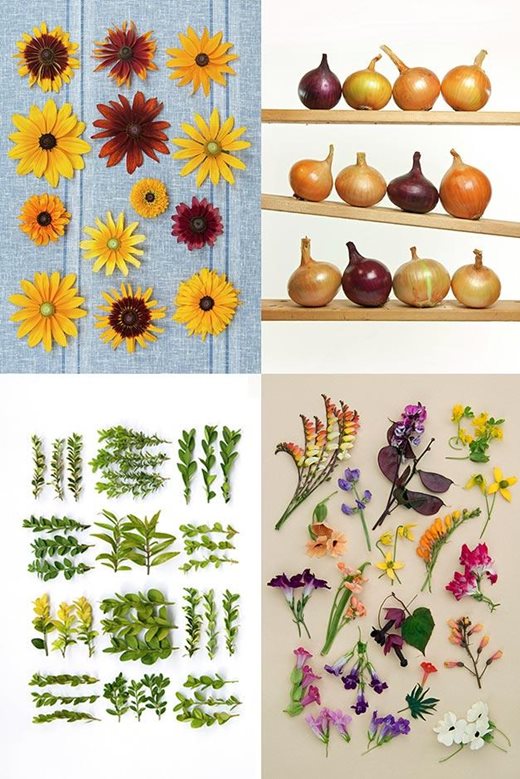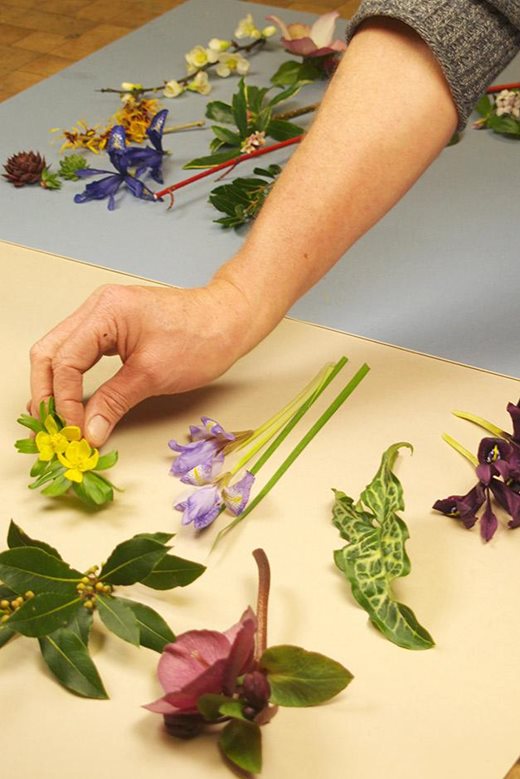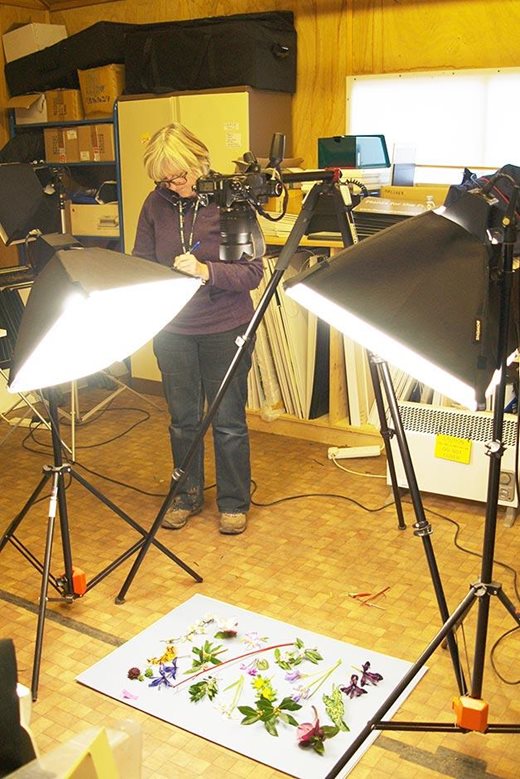Photographic plates are an iconic part of The Garden; trainee horticultural journalist Nicola Oakey helped on a photoshoot to see how they are created
 Tip-toeing onto borders we searched for the plants we needed to photograph. The frosty morning air at RHS Garden Wisley made cutting plant samples, labelling and securing them in bags quite a test in our thick gloves.
Tip-toeing onto borders we searched for the plants we needed to photograph. The frosty morning air at RHS Garden Wisley made cutting plant samples, labelling and securing them in bags quite a test in our thick gloves.
In most issues of The Garden a photographic plate presents selections of fruit, flowers or vegetables arranged side-by-side, on a coloured background. Arranged simply to display subtle differences between cultivars, a plate brings to life the appearance of any plant subject and makes it possible to compare plants that are similar in appearence. Their success comes from their simplicity as well as artistic skill.
Searching for flowers
 January is not renowned for borders bursting with plants, but we were there to find and photograph the rare winter beauties on show. Thankfully the beds and borders at Wisley have a numbering system, making it easier to find the material we needed.
January is not renowned for borders bursting with plants, but we were there to find and photograph the rare winter beauties on show. Thankfully the beds and borders at Wisley have a numbering system, making it easier to find the material we needed.
Some plants were easy to find the scent of the winter-flowering Daphne bholua 'Jacqueline Postill filled the air before we could even see it. Other plants, like the delicate crocus, were a challenge to locate, especially as the blooms were still tightly closed. Once we had collected about a dozen different plants we made our way to the hidden photography studio near the Hillside Events Centre.
Creating compositions
Two different coloured backgrounds are selected, usually cardboard, in shades that will emphasise the plant subject. The real art is then composing the collection. It’s a difficult to achieve balance and make the composition look natural yet organised. The plants and background were arranged on the floor, with the camera positioned overhead (pictured bottom right).
 Photographing flowers and foliage tends to be a more straightforward plate, however when faced with several similar-looking cultivars there is more opportunity to experiment with different props and arrangements.
Photographing flowers and foliage tends to be a more straightforward plate, however when faced with several similar-looking cultivars there is more opportunity to experiment with different props and arrangements.
The warmth of the studio ‘defrosted’ the frozen flowers, which then needed to have their petals dried. It took barely 10 minutes for the tightly shut crocus buds to open on their own accord. We then had to work quickly and take the photos before the flowers started to deteriorate.
Finishing touches
Finally, we stood on our tip-toes to look through the camera’s viewfinder and check the final composition. The appearance of the image changes when viewed through the eye of a camera. We made any final adjustments – sometimes all it took was a little wobble of a leaf to get the position just right, and a spot of blue-tack stops any movement. When we were happy with the picture we took the photographs.
The plates are photographed a year before they will be used in the magazine, so the photographs we took will appear in early 2017. I'm excited to see the completed article, now I know the effort it takes to create each plate.

